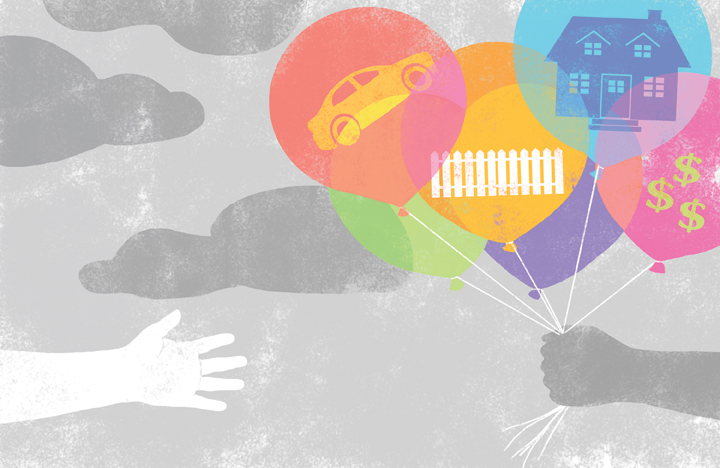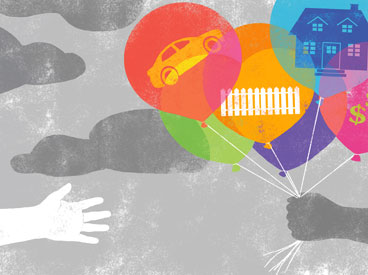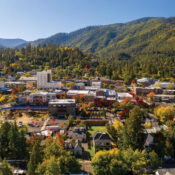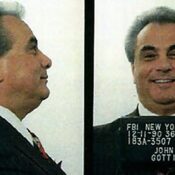Over the past three decades, we have become Two Americas. We are no longer one large family with shared prosperity and shared political and economic power, as we were in the decades following World War II. Today we are a sharply divided country—divided by power, money, and ideology.
Abraham Lincoln gave fair warning: “A house divided against itself cannot stand.” Many observers write about this, but it is hard to grasp exactly how we arrived at our present predicament or how to go about healing America’s dangerous divide. The causes do not lie in the last election or the one before that. They predate the financial collapse of 2008. But certainly one of the chief culprits is the shifting of financial burden from government and large corporations onto the backs of middle-class workers and their families.

When Paul Taylor and Rich Morin of the Pew Research Center did a poll on how people were faring during the Great Recession that started in December 2007, they described a revealing dichotomy in the public mood—a schizophrenia in which 55 percent of Americans reported they were in deep trouble, but 45 percent claimed to be holding their own.
Taylor was so struck by these two different portraits that he titled their report “One Recession, Two Americas.” The report explained the dissonance in people’s experience, such as my own puzzlement at reading newspaper accounts of 15 million Americans being unemployed and 6.7 million families being foreclosed out of their homes, then seeing suburban restaurants jammed with people on a night out, spending as if the economy were strong.
We are literally Two Americas, remarkably out of touch with each other—the fortunate living the American Dream but lacking any practical comprehension of how the other half are suffering, unaware of the enervating toll of economic despair on the unfortunate half, many of whom just two or three years before had counted themselves among the fortunate.
The Pew survey documented a class split in America. Among the losers, the picture was bleak: Two-thirds said their family’s overall financial condition had worsened; 60 percent said they had to dig into savings or retirement funds to take care of current costs; 42 percent had to borrow money from family and friends to pay their bills; 48 percent had trouble finding medical care or paying for it. The psychological toll was heavy. By contrast, the other half, the relative winners, admitted to some problems such as stock market losses but described their woes as modest and manageable.
“The single most common word or phrase used to characterize the past 10 years,” the Pew Center reported, “is downhill, and other bleak terms such as poor, decline, chaotic, disaster, scary, and depressing are common.”
That language tells how average Americans feel. The numbers describe the damage. In 2008, American households lost $11.1 trillion, close to one-fifth of their total accumulated private wealth. More and more trillions evaporated in 2009, 2010, 2011 and 2012. With housing prices falling steadily for five straight years, unemployment stuck at stubbornly high levels, and the stock market bouncing up and down, periodically spooked by fear of a second dip into recession, those astronomical losses became permanently etched into the lives of millions of middle-class families. Their personal safety nets had been shredded.
Translating cold numbers into a graphic picture of the hard economic realities in the lives of ordinary people is a challenge. Recently, Yale University political economist Jacob Hacker and his research team developed the Economic Insecurity Index, which logs the harshest economic blows a family can face—an income loss of 25 percent or more in a single year; superheavy medical expenses; or the exhaustion of a family’s financial reserves. Using this index, Hacker found that in 1985, roughly 10 percent of all Americans had suffered an acute financial trauma. By July 2010, the proportion had jumped to 20 percent—one in five American families suffering from an economic tornado ripping through their lives.
As that Pew Center poll discovered, even middle-class families who avoided the most acute distress have experienced rising economic anxiety. There is good reason for that. Financial insecurity has been written into the DNA of America’s New Economy. Not only have economic gains been distributed more unequally than during the era of middle-class prosperity, but Corporate America has rewritten the social contract that once underpinned the security of most average Americans. The company-provided welfare safety net that rank-and-file employees enjoyed from the 1940s into the 1970s has been sharply cut back, and a huge share of the cost burden has been shifted from companies to their employees.
In 1980, for example, 70 percent of Americans who worked at companies with 100 or more employees got health insurance coverage fully paid for by their employers. But from the 1980s onward, employers began requiring their employees to cover an increasing portion of the health costs. Other employers dropped company-financed health plans entirely, saying they could not afford them.
So pervasive did this burden shift become that by the mid-2000s, only 18 percent of workers—one-quarter of the percentage in 1980—were getting full health benefits paid by their employers. Some companies may have needed this change to survive, but many simply added the cost savings to their profit line.
Become a Saturday Evening Post member and enjoy unlimited access. Subscribe now



